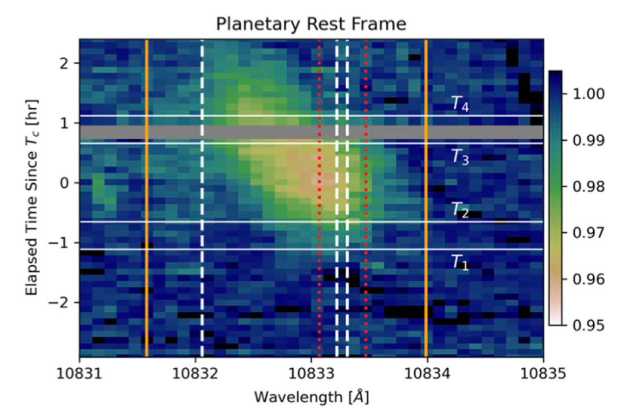The Keck Observatory have put out a press release saying that WASP-69b’s comet-like tail is at least 350,000 miles long, 7 times bigger than the planet itself. The tail results from evaporation of the planet’s atmosphere, caused by irradiation by its hot star.
The observations, reported in a paper led by Dakotah Tyler, a PhD student at UCLA, used the Keck/NIRSPEC spectrograph to study helium atoms in material boiling off the planet. They observed a transit of the planet across the face of its star, and detected helium absorption long after the transit itself had ended, showing that a plume of escaping gas was still absorbing some of the starlight.

An artist’s impression of evaporating planet WASP-69b and its comet-like tail. (Credit: W. M. Keck Observatory/Adam Makarenko)
“The WASP-69b system is a gem because we are able to study its atmospheric mass-loss in real-time,” says co-author, Erik Petigura. “This makes for a rare opportunity to understand the critical physics that shapes thousands of other planets.”

Helium absorption (yellow/green) is still seen after the end of transit (contact time T4), revealing the cometary tail.
The press release has led to coverage on multiple webpages, including in The New York Times, Newsweek, Arab Times, Forbes, Salon and others.



